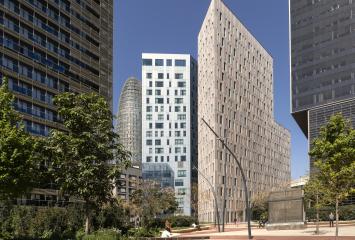Colonial: decarbonization goals for 2030
Climate change is the biggest environmental challenge today and to mitigate the negative effects many companies have developed sustainable strategies and objectives to achieve decarbonization.
This word involves a process whose main purpose is to reduce greenhouse gas emissions, mainly those produced in the form of carbon dioxide. In this context, one factor that has driven the transition to a low-carbon economy has been the Paris Agreement. It is a legally binding international treaty on climate change that has been adopted by 195 parties at COP21 in Paris, on December 12, 2015, and came into effect on November 4, 2016. It aims to limit global warming to well below 2, preferably 1.5 degrees Celsius, compared to pre-industrial levels.
Road to decarbonization
In order to support the Paris Agreement on climate change, at Colonial we have set some objectives in a decarbonization plan, which involves the reduction of emissions to zero in all our assets:
Initially we had planned to achieve this goal by 2050, but thanks to our strategy and sustainable model it will be possible to reach this goal as early as 2030. Our decarbonization plan takes as main indicators the carbon intensity (total carbon footprint of the portfolio in terms of ratio per square meter) and energy intensity (Kwh/square meter).
In recent years, the number of emissions has decreased:
-
In 2015 the volume of emissions was 26 kilograms per square meter
-
In 2019 the volume of emissions was 12 kilograms per square meter
-
In 2021 emissions dropped to 8 kilograms of CO2 per square meter
For this reason, we expect to reach 0 kilograms by 2030.
Sustainable measures
We support our plan through sustainable measures such as the use of recycled materials, renewable energies and the use of technology that allows us to sensorize facilities and monitor the impact of buildings and optimize self-consumption.
In addition, we promote an increasingly sustainable construction model: 95% of our buildings have energy efficiency certificates, the highest rate in Europe. We have 1,600 million euros in assets with LEED certification and 9,700 million with the BREEAM seal. Some of our assets have the highest environmental ratings, as in the case of Biome (Paris) or Miguel Ángel 23.
And lastly, we have converted all our currently outstanding bonds into green bonds, which constitute an alternative to company financing in an environment in which the awareness of companies in sustainability issues is becoming increasingly important.
In short, decarbonization is not only one of the pillars of our program, but also represents the necessary basis for the sustainability of the future.

